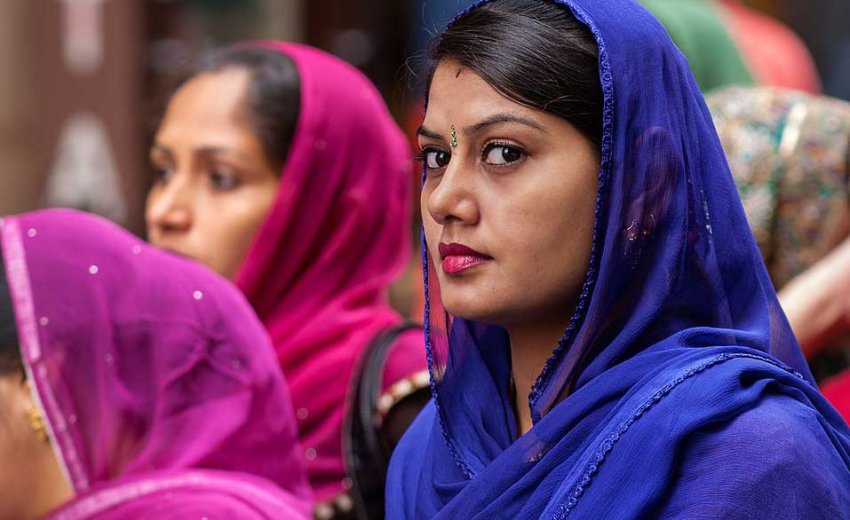With the Guru’s charge of equality and empowerment, Sikh women have become an unstoppable force for good and community building. We are soldiers, doctors, lawyers, artists, and musicians. We are pillars in our workplaces, in our communities, and in our families. We have been many things and continue to break barriers moving forward. Yet, there are many challenges facing women when trying to achieve their goals and dreams such as sexism, patriarchy, and misogyny. These obstacles will probably take years to tear down, but there is one obstacle that each of us has the power to tear down right this minute: Woman-on Woman Hate.
“Who among us hasn’t suffered the sting of a woman’s snarky comment or workplace sabotage? Or experienced the ickiness of mean-girl shunning or lie-spreading?” asks journalist Susan Skog.
The topic of “women holding women back” has been the topic of much research and many articles. Sophia Nelson, the author of a new self-help book for women called “The Woman Code,”explains that “From the time we’re little girls, we’re taught to compete. ‘I need to be prettier, taller, smarter, my hair needs to be straighter, curlier, whatever it is. I need to get the better looking guy. I need to always be better than because we’re taught to come from a place of lack as women.’ ”
We have made so much progress that it would be a shame for Sikh women to regress into mean, middle school girls. Bhai Gurdarshan Singh of Washington D.C. once said, “The highest form of seva is to elevate someone’s self-esteem.” Yet, sadly, many of us have faced the opposite. We owe it to ourselves and our younger sisters to model the best Sikh behavior of sadh sangat.
“There’s
a Wonder Woman inside every one of us,” as New York designer Diane
Von Furstenberg said. We should unleash this wonder woman and
help our sisters unleash theirs. Supporting one another,
regardless of what we look like or what we do, to realize our highest
selves, is a form of seva.
“We can’t afford to fall back into outdated, destructive ways: when we hold one woman back, we hold all women back,” says Skog. “And when we empower and support each other, we all go big. The world is calling for us to go big!”
Below is a poem by Manveer Singh that sums up some of the Kaur-on-Kaur hate he has observed. Obviously, we do not mean to suggest that everyone behaves this way and we know there are many Kaurs out there who would never bring-down another woman and instead, fully support one another. But, the more conscious we can be of our thoughts and actions, the more we can help build a loving and caring environment where everyone can thrive.
----------------------------------------------------------------------------------------------------------------
Kaur
by Manveer Singh
Vaisakhi
1699, Guru Gobind Singh made a revolutionary move.
He gave us our
royalty.
My brothers were made Singhs, princes in my Father’s
Court,
My sisters were elevated high to Kaurs:
Kaur from the
Rajasthani Kanwar or Kauwar
Kaur denoting an heir to the
throne
Kaur who rises among the Singhs as an equal,
Yet we have
let our Pitaa Ji down.
My sisters have been subjugated and many
subjugate themselves.
I see a hierarchy made of women
Based on
what they choose to wear on their heads.
Have you forgotten that
we are the faith of Sangat?
Opening ourselves up to the entire
community,
No matter what their personal practices are?
Have
you forgotten that we are the faith of Pangat?
Where prince and
pauper sit side by side as equals,
Where there is no low,
Where
there is no high, but the Highest One?
Have you forgotten why the
Khalsa was sent down?
Have you forgotten our vow to not tolerate
subjugation?
Then how can you judge a sister solely on how she
looks?
You judge her for her makeup,
But you do not see her
love for her Guru.
You judge her for letting down her hair,
But
you do not see the hours of seva she has done.
You judge her for
not wearing a dastaar,
Yet you yourself have not looked into your
own inequities.
Here’s a fact that will shock you:
No one is
perfect!
We fail, yes, yet we strive.
Sikhi is path, not a
destination.
A Kaur does not have one static look, yet she is a
testament to a pluralistic yet united group of fierce women:
My
sister with her beautiful hair let down is a Kaur,
My sister with
her hair in a majestic bun is a Kaur,
My sister with her regal
dupatta sitting on her head is a Kaur,
My sister with her rumaal
tied proudly is a Kaur,
My sister with her dumalla hailing the
Glory of Guru is a Kaur.
I will not stand for anyone who judges a
sister due to her looks.
I will not stand for anyone telling her
she is not a Kaur.
I will not stand for anyone telling her she
cannot be happy with herself.
Being a Kaur is not about the
appearance:
It is about declaring self-sovereignty,
It is about
self-empowerment,
It is a state of mind.
I will forever stand
for my sisters’ right to be exactly who she is on her own terms,
and if that makes me a manmukh in your eyes, so be it.
My Guru is
too loving and too open for the possibility of His Panth to be so
narrow and so close-minded.

